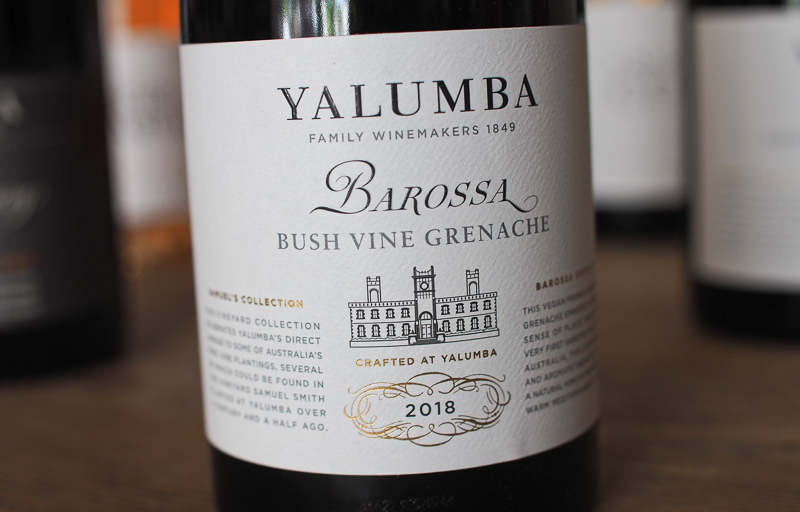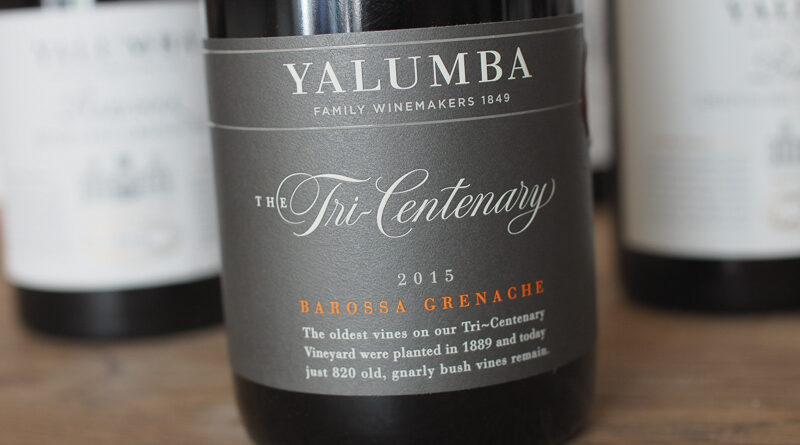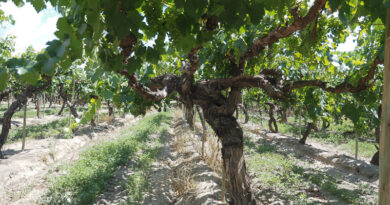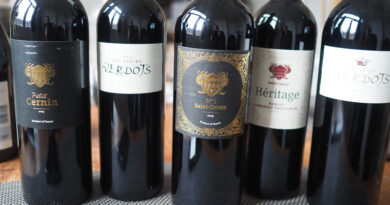Yalumba: a focus on Barossa Grenache
Has the time finally come for Grenache to come out of the shadows? Kevin Glastonbury, winemaker with leading Barossa producer Yalumba thinks so. ‘I always thought there was more to the Barossa than the main star, Shiraz,’ he said, as he led a Zoom seminar focusing on Yalumba’s efforts with Grenache. ‘Shiraz gets a bit too much airplay,’ says Glastonbury. ‘I have always had a passion for the underdog.’
And there has been a stylistic change, as well. In the Barossa, people used to make Grenache as a big wine, he says, and it never really worked. Glastonbury points out that in recent years, Barossa Grenache has changed dramatically, moving from the richer style to one showing more finesse, including the use of techniques such as whole bunch. ‘This has been long overdue,’ says Kevin. ‘It is great that it is getting some airtime in its own right.’
What is the reason for this change in style? ‘It has just evolved,’ says Glastonbury. ‘I guess a lot of that is because winemakers in general like more savoury wines, they like lighter-framework wines with tannin. Everyone likes great Pinot and great Pinots are very different to fuller-bodied Shiraz. For me, it is quite exciting seeing these old vine vineyards with their low crops produce some pretty intense flavours at 13-14% alcohol.’
2011 was a pivotal harvest for the change of Grenache style. It was an atypically cool, wet year in the Barossa. They picked at lower ripeness as a result, and realised that Grenache picked earlier was actually very interesting, and the previous notions of ripeness were mistaken.
About a third of the Yalumba Bush Vine Grenache will spend a reasonable length of time on skins post ferment. ‘A couple of the batches will stay on skins and the rest will go straight to barrel,’ says Glastonbury. ‘In this vintage [2018] a third of the wine was on skins for 61 days. The reason we do this is stylistic: we are looking for a tannin integration with the phenolics, to give a rich savouriness, but juicy still. The rest of the wine is matured in old barrels. We are looking for a red-fruited wine with mid-palate flesh.’
So what happens to the tannins in a post ferment maceration? I asked Glastonbury. ‘I don’t know chemically what is happening other than there’s a lot of binding of a lot of things going on. One of the intriguing things about tasting a Grenache as it evolves post ferment, is that in some weeks you can find the wine tasting quite thin on the palate: it is almost as though it has been watered down. Then, a couple of weeks later, you can taste it again, and find that it is very bitter, with a green peppercorn bitterness. And the next week it is balanced, even and fleshy. It goes in waves like this.’
New oak with Grenache? ‘I don’t see the point,’ says Glastonbury. ‘Oak can have a big stamp on a lot of wines. You need the right vineyard in the right area to give you that balance. I think that the Grenache fruit profile should always be the star. You can have lovely aromatics and finesse, and as soon as you add the nuances of oak, it can clip the aromatics and influence the palate direction. For us, Grenache should always be in older oak.’
THE WINES
Yalumba Samuel’s Collection Grenache Shiraz Mataro 2016 Barossa, Australia
13.5% alcohol. This is around 50% Grenache, 35% Shiraz and Mataro as the filler for the back end of the palate. Grenache comes from Kalimna in the north Barossa. It grows well on sandy loam soils. Shiraz is from the red dirt of Light Pass, and the Mataro is from Kalimna. Glastonbury says the idea is to make a wine that represents the rustic (in a good way), savoury style that has been the backbone of the Barossa. This is more structured and savoury. ‘We are not afraid of tannins in the wine,’ says Kevin, ‘rather than having just a big sweet wine.’ It is a wine style about drinkability but also food compatibility.The wines are all made as individual batches, and all are wild ferments. After the fermentation. ‘This is a more down-to-earth savoury style,’ he says. It goes to barrel, and then wooden vats, and also some puncheons and small oak. This ends up 10-15% new oak, usually for the Shiraz. This is really juicy, supple and quite subtle, with a bit of grainy tannin under the sleek, sweet red berry fruits. There’s a sleek mid-palate with some liqueur-like fruit notes, but also some nice spice. Fruity and expressive with great balance: a subtle wine, but a very drinkable one, with an emphasis on elegance and harmony rather than power, but not lacking any ripeness. 93/100

Yalumba Samuel’s Collection Bush Vine Grenache 2018 Barossa, Australia
14.5% alcohol. ‘This is one of the staple wines at Yalumba,’ says Glastonbury. ‘It is just such a reliable wine. Even though it shows vintage variation, everyone just loves it.’ It is from old vine Grenache, planted from 1889 to 1972, with the average planting 1944. These vineyards are spread from Tanunda, to Kalimna, to Vine Vale. All are bush vines, or bush vines adapted to a single-wire trellis. ‘The resource we have is fantastic,’ says Glastonbury. ‘The evolution has been from a 15% dark-fruited, deep-coloured style to now where we are chasing more finesse and precision.’ He adds that these days many producers are making this style. Some whole bunch here, and a long post-ferment maceration to get the right mouthfeel. Cherry red in colour, this is a lighter-styled Grenache, but it’s not lacking in flavour. It has sweetly aromatic red cherry fruit with some fine peppery spiciness and notes of dried herbs and black tea, with a touch of bergamot. So fruity and expressive, with a fine, grainy structure. The most important feature here is the texture: at the same time silky and enticing, but also with some spicy underpinning. It’s such a lovely wine, showing elegance and poise. Just a tiny hint of mint on the fresh, tapering finish. 94/100
Yalumba The Tri-Centenary Grenache 2015 Barossa, Australia
13.5% alcohol. In 1999 Robert Hill Smith bought a vineyard on the valley floor. It was called ‘The Greats’, and was home to 20 acres of old bush vine Grenache. He wanted this lovely old vineyard and was planning to establish the Yalumba vine nursery here. There was a block of 820 vines planted in 1889. ‘In my first year at Yalumba I got to play with some seriously old Grenache,’ says Glastonbury. They made this wine in 1999, and have made it ever since, but it hasn’t always been released. ‘From day 1 the challenge was to make a wine that really stood out,’ he says. ‘Robert wanted this 1889 parcel to be a top-end wine. I wanted to push it in a different direction rather than it just being another Barossa Grenache. We started heading it into the savoury spectrum. In the early days we were adding some bundles of dried canes into the ferment. These were cut from a Shiraz vineyard the previous vintage.’ Since 2005 they have concentrated on post-ferment maceration, which has been the style of the wine. This is quite remarkable. It has a savoury, slightly earthy, slightly baked nose of cherries, plums, iodine and herbs. On the palate this is complex and savoury with intense but restrained cherry and plum notes, with a hint of raisin and earth, as well as leather, herbs and fine spices. Good structure and intensity here: it’s as much about the savoury character as it is about the fruit. A compelling, powerful wine, with lots of complexity. Quite unique: I have no idea where I’d place this if I was tasting it blind. 94/100
Find these wines with wine-searcher.com




